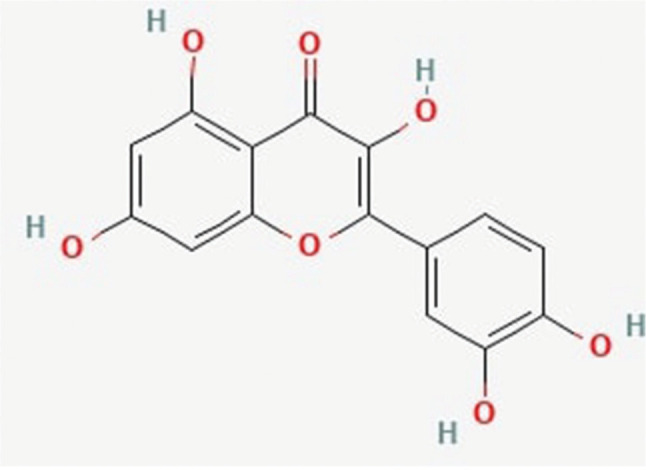The Multimodal Properties of Quercetin in Chronic Pain Syndromes.
IF 1.2
Q4 HEALTH CARE SCIENCES & SERVICES
Indian Journal of Palliative Care
Pub Date : 2023-07-01
Epub Date: 2023-07-11
DOI:10.25259/IJPC_151_2022
引用次数: 0
Abstract
To the Editor, Bioflavonoids are a family of polyphenolic molecules found in a variety of plants and reportedly have significant antioxidant and anti-inflammatory properties. Based on their chemical structure, flavonoids are broadly classified as flavones, isoflavones, flavanones, flavonols, flavan-3-ols (flavanols), and anthocyanins. Despite the difference in their chemical structure, the members of the flavonoid family share the same flavan nucleus. The recent interest in flavonoids for exploring their role in various chronic ailments is probably their antiinflammatory and anti-oxidative properties mediated through various target molecules. Various flavonoid-containing products are available and marketed for topical and oral use. Flavonoids available in natural sources are subject to variable bioavailability when taken orally. To increase its oral bioavailability and water solubility, companies have introduced these formulations as microcapsules, nanoparticles, liposomes, cyclodextrin, and phospholipid inclusion complexes.[1] Quercetin (3,3′,4′,5,7-pentahydroxyflavone) is a flavonol that is the most common flavonoid which has been investigated in various pathologies in human and animal studies [Figure 1]. Quercetin is a member of bioflavonoids and is found in red wine, green tea and onions. It possesses potent free oxygen scavenging, antioxidant and anti-inflammatory properties. As an antioxidant, quercetin scavenges free radicals directly, chelates metal ions and inhibits lipid peroxidation. The antioxidant property demonstrated an increase if the concentration of quercetin used is more. Research has also demonstrated the anti-tumour properties of quercetin by preventing the cell cycle, promoting cell apoptosis and inhibiting angiogenesis.[2-4] Chemotherapy-induced peripheral neuropathy is a distressing condition that is difficult to manage. The use of quercetin provided favourable results in patients with platinum compounds and taxon-induced peripheral neuropathy in induced models and animal studies.[5] Several human and animal studies investigated the role of quercetin supplements in painful arthritis such as osteoarthritis and rheumatoid arthritis successfully. The plausible mechanisms responsible are cyclo-oxygenase 2 inhibition, reduction of tumour necrosis factor α, interleukin 1β and17, and monocyte chemoattractant protein-1 levels.[6] The neuropathic pain associated with diabetic neuropathy is difficult to treat even with a combination of medications. Flavonoid compounds could be the next possible agent which could relieve the suffering of these patients incessantly suffering from excruciating pain. The regular use of flavonoids has been shown to decrease the reactive oxygen species level by increasing the level of antioxidative enzymes such as glutathione peroxidase, reduced glutathione peroxidase and superoxide dismutase, glutathione reductase and catalase in various tissues such as the liver, sciatic nerve and brain of experimental animals.[7]

槲皮素在慢性疼痛综合征中的多模式特性。
本文章由计算机程序翻译,如有差异,请以英文原文为准。
求助全文
约1分钟内获得全文
求助全文
来源期刊

Indian Journal of Palliative Care
HEALTH CARE SCIENCES & SERVICES-
CiteScore
2.30
自引率
0.00%
发文量
57
期刊介绍:
Welcome to the website of the Indian Journal of Palliative Care. You have free full text access to recent issues of the journal. The links connect you to •guidelines and systematic reviews in palliative care and oncology •a directory of palliative care programmes in India and IAPC membership •Palliative Care Formulary, book reviews and other educational material •guidance on statistical tests and medical writing.
 求助内容:
求助内容: 应助结果提醒方式:
应助结果提醒方式:


